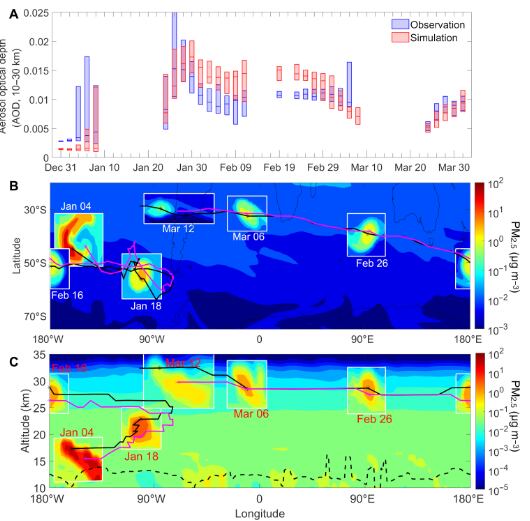THE LATEST
China unveils wildfire impact on ozone dynamics: A satellite data, supercomputing perspective

In a recent study, a multidisciplinary team of scientists from China, Germany, and the USA uncovered the intricate relationship between large wildfires and the delicate chemistry of the ozone layer. By using advanced satellite data and cutting-edge supercomputing models, the researchers revealed a previously unseen connection between catastrophic wildfire events, like the 2019/20 Australian bushfires, and the dynamics of the stratosphere. The ozone layer, crucial for shielding life on Earth from harmful ultraviolet (UV) radiation, has shown signs of recovery over the years, thanks to global efforts such as the Montreal Protocol. However, the stability of this vital atmospheric layer faces a new challenge as evidenced by the impact of the Australian wildfires. During these unprecedented events, a significant increase in stratospheric aerosols – tiny particles with far-reaching impacts on climate, health, and atmospheric chemistry – was observed.
The study discovered a novel phenomenon termed the smoke-charged vortex (SCV) – a potent, smoke-laden whirlpool capable of transporting wildfire emissions as high as 35 kilometers into the stratosphere. This process contributed to a doubled burden of aerosols in the southern hemisphere's middle stratosphere, triggering a series of heterogeneous reactions that influenced ozone concentrations. Surprisingly, the study found that these wildfire-induced aerosols led to both ozone depletion in the lower stratosphere and ozone increase in the middle stratosphere due to enhanced chemical reactions on aerosols at higher altitudes.
Prof. Yafang Cheng from the Max Planck Institute for Chemistry emphasized the significance of continued research and vigilance as we navigate the realm of climate change, stating, “Our study unveils a crucial mechanism in which wildfire smoke, containing absorbing aerosols like black carbon, can generate vast smoke-charged vortices that persist for months and impact the ozone layer differentially at various altitudes.”
The findings underscore the importance of understanding these complex atmospheric processes, especially in a changing climate landscape marked by increasing wildfires. As we strive to comprehend the interplay between natural events, climate change, and ozone dynamics, the study opens new avenues for further research toward safeguarding the integrity of the ozone layer vital for all life forms on Earth.
In conclusion, the integration of advanced satellite data and supercomputing tools has revealed a critical link between wildfire events and stratospheric chemistry, showcasing the evolving challenges that the ozone layer faces in the wake of climate change-induced natural disasters. This study serves as a clarion call for sustained exploration into how wildfire and other climate-driven phenomena might shape the future dynamics of the ozone layer.

